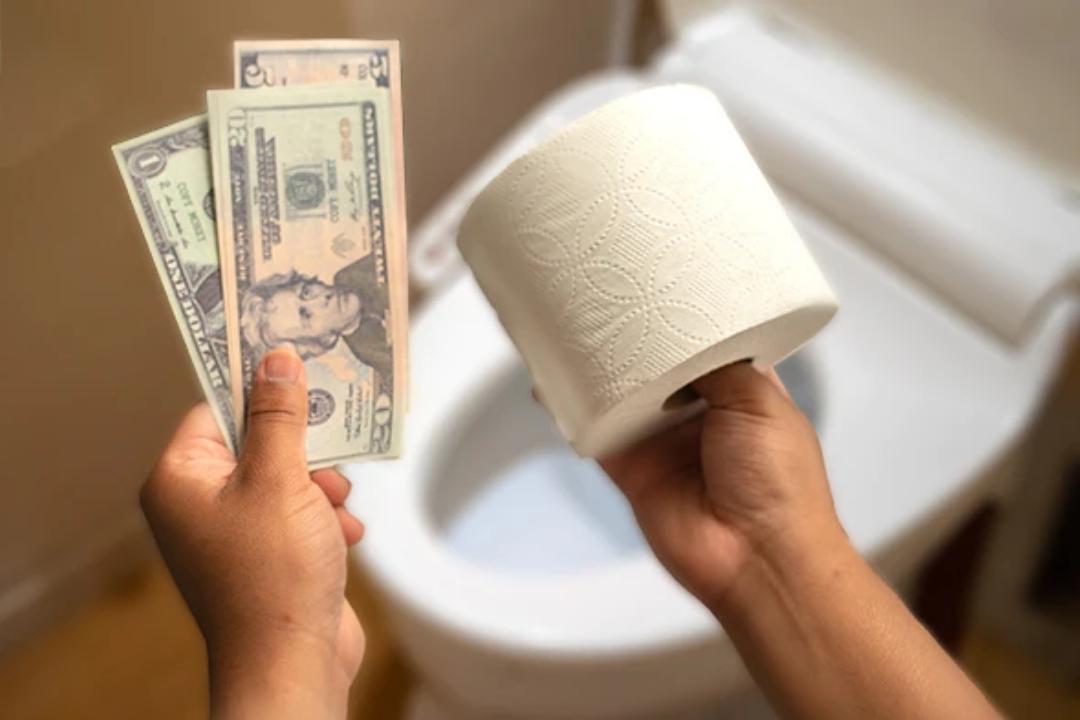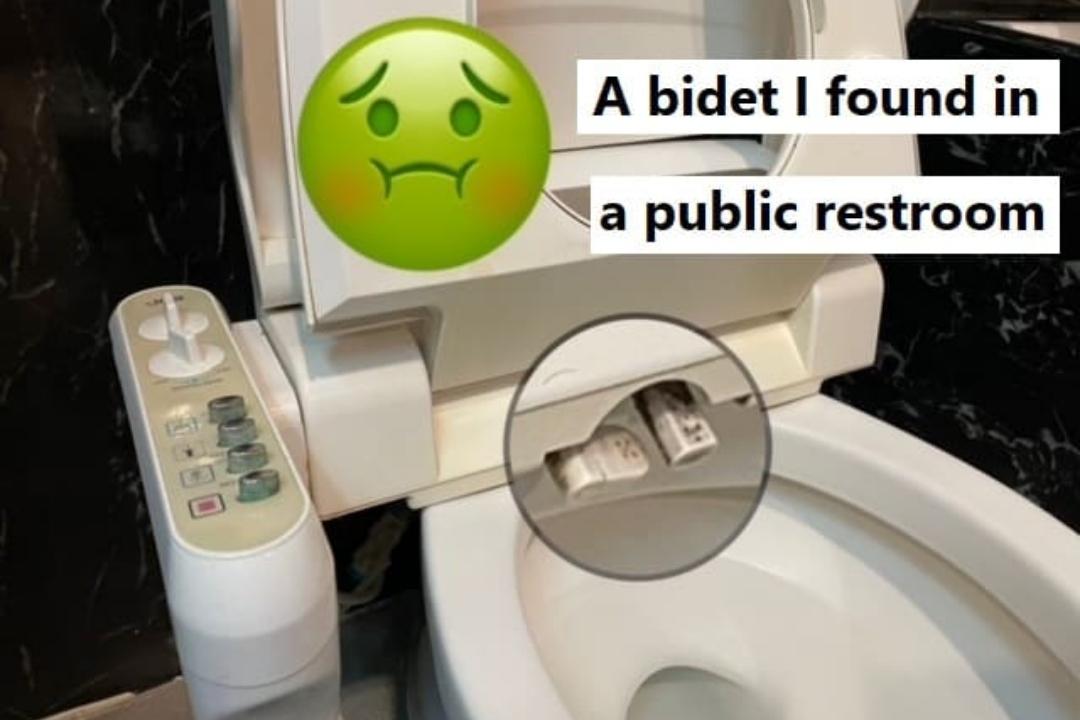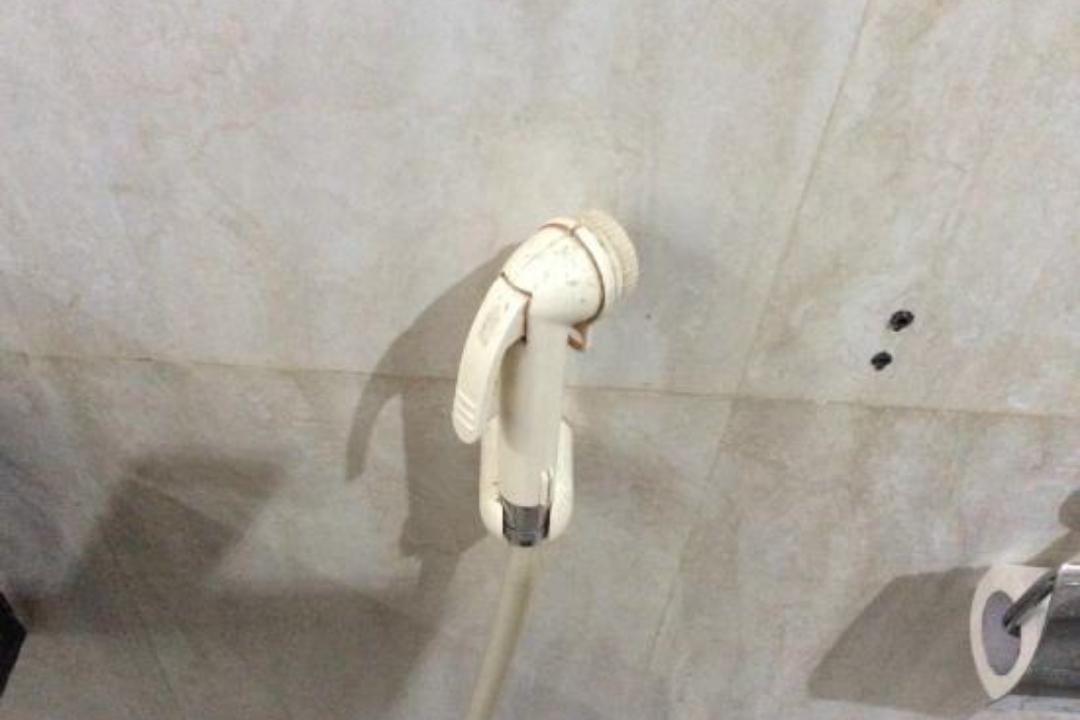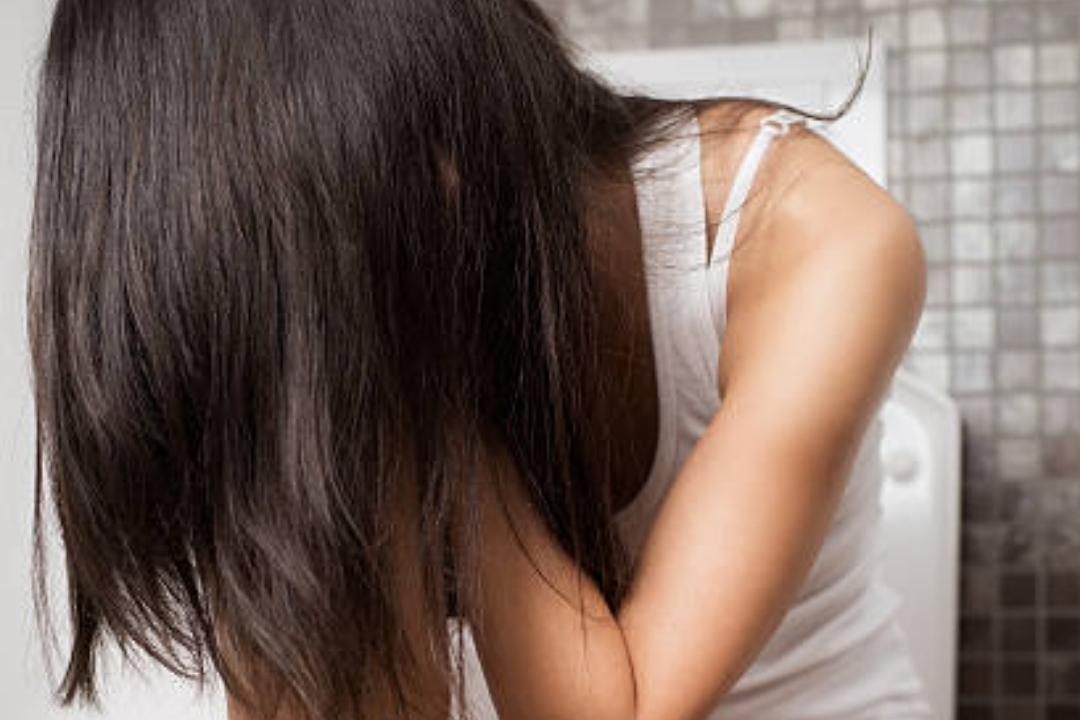Are bidet good for females?
 Bidet are commonly thought to be a hygiene device used only by women. However, both men and women can use bidets for a cleaner and more refreshing experience.
Bidet are commonly thought to be a hygiene device used only by women. However, both men and women can use bidets for a cleaner and more refreshing experience.
Using bidets is beneficial for both men and women. They help to keep the anus and genitals clean after using the toilet. Bidets also offer a more thorough and comfortable cleansing experience than toilet paper alone can provide.
There are several other reasons why bidets are good for both men and women.
- For women, Bidets can help cleanse and soothe the perineal area during pregnancy and after childbirth and reduce the risk of developing hemorrhoids, perineal tears and other anal discomfort.
In addition, regular use of a bidet can also help prevent urinary tract infections (UTIs), and other anal or genital problems like yeast infections. This is because bidets help keep the area clean and free from bacteria.
Some women use bidets to relieve symptoms of menopause, such as vaginal dryness or itching. Bidets help reduce irritation and inflammation in the genital area. This is due to the fact bidets provide a gentle stream of water that can help soothe any existing irritation. They can also be helpful for women who have urinary incontinence or who experience vaginal discharge.
Finally, bidets can be a great way to stay clean during menstruation.
- Bidets are also good for men because they can help cleanse the penis and anus. Using bidets can help reduce the risk of prostate problems by ensuring that the area is clean and free from bacteria. They can also be useful for those who suffer from urinary incontinence or erectile dysfunction.
- Bidets can also be used by people with mobility issues or certain medical conditions.
Overall, bidets can be very beneficial not only for women, but also for men. As it can help promote better hygiene and offers a more thorough cleansing experience effectively and comfortably than toilet paper alone.
What are the downsides of bidet?
When it comes to personal hygiene, many people turn to bidets as a way of keeping themselves clean. In this article, we will talk about the potential downsides of using a bidet. While bidets have many potential benefits, there are also some potential drawbacks that users should be aware of.

-
High initial cost
Though a bidet may save you money in the long run by reducing your need for toilet paper, and may offer many benefits, such as a more thorough cleaning than toilet paper alone and being more eco-friendly, the high initial cost can be a deterrent for some.
A good quality bidet seat can cost anywhere from $100 to $500, with more expensive models offering features like heated seats and water, adjustable pressure and temperature settings, air dryers, and deodorizers.
A handheld bidet can cost anywhere from $30 to $200. This is a significant investment, especially if you are only going to use it occasionally.
For those who are willing to pay the upfront cost, a bidet can be a worthwhile investment.
If you’re considering a bidet, be sure to factor in the initial cost before making your decision.
-
Installation costs
Another downside of bidets is some of them can be quite expensive to install. Installing a bidet in your home can be a costly endeavor. Not only do you have to purchase the unit itself, but you also have to pay for installation fees. Some bidets need to be installed by a professional plumber, and the costs can vary depending on the type of bidet and the complexity of the installation. These costs can add up, making it difficult to justify the expense. If you’re considering adding a bidet to your bathroom, you’ll need to factor in the cost of the unit itself as well as any plumbing work that may be required.

-
Limited availability of models
While you can find bidets in some stores, they are not widely available. This can make it difficult to find the right model that fits your budget and needs.
While bidets may be gaining in popularity in the United States, they are still not widely available. This can be a problem for people who want to use them, as there are a limited number of models to choose from. This can be especially frustrating if you have a specific type of toilet that you need a bidet for.

-
Bidet can be unsanitary
One of the biggest concerns of using a bidet is that they can actually be quite unsanitary if they are not cleaned properly. If you do not clean your bidet after each use, bidets can become breeding grounds for bacteria and other microbes. This can lead to serious infections, especially in people with weakened immune systems.

-
Bidet can be Unhygienic
Some people believe that bidets are unhygienic, causing more harm than good. Another downside to using a bidet is that they can actually spread bacteria around. If the water in the bidet is not clean, it can introduce new bacteria to your body or even recirculate existing bacteria. In addition, if you do not properly dry yourself off after using a bidet, you may be leaving yourself susceptible to fungal infections.
Another downside of using a bidet is that they can be quite drying to the skin. If you use a bidet too frequently, it can cause your skin to become irritated and dry.

-
Health concerns
As bidets can spread bacteria from the anus to the genitals. There is also a risk of urinary tract infections, as well as vaginal infections, if the water is not clean. Finally, people with hemorrhoids or other anal problems should be cautious when using bidets, as they may aggravate these conditions.
Here are other possible health risks associated with the use of a bidet
- Skin irritation: Bidets can cause skin irritation, especially if they are not properly maintained. Be sure to clean your bidet after each use and dry off well afterwards to avoid this problem.
- Urinary tract infections: If you do not clean the bidet after each use, bacteria can build up and cause urinary tract infections.
- Allergic reactions: Some people may be allergic to the chemicals in the water or cleaning solutions used with a bidet. If you experience any allergic symptoms after using a bidet, discontinue its use and see your doctor.

-
Discomfort
Bidets can be very uncomfortable or awkward to use for some people, especially if they’re not used to them. For one, you may feel exposed while using a bidet since you generally have to sit with your legs spread open. This can be especially true if the bidet is in a public restroom. Additionally, you may need to use toilet paper to dry off afterwards, which can be inconvenient if there’s no paper available or if the paper is low quality. Some people simply don’t like the feeling of water hitting their genitals, which is understandable.
Another reason to feel discomfort is that they can be hard to use for people with mobility issues. If you have trouble moving around, it can be difficult to position yourself on a bidet. This can make them especially challenging for people with certain medical conditions, such as arthritis or spinal cord injuries.

-
Bidets can be messy
Water Everywhere: A bidet sprays water, which means there’s potential for water to get everywhere – on the floor, on your clothes, or in your face if you’re not careful. If you have a small bathroom or limited space to move around, this could be an issue.
Another potential downside of using a bidet is that you may end up spraying water all over your bathroom. This can create an unpleasant mess and make it difficult to keep your bathroom clean. Bidets can be messy, leaving water and residue on bathroom floors. There is potential for water to splash and make a mess. If you have pets or small children, they may be able to reach the bidet and make a mess. You may also track water and residue into your home if you don’t have a good way to contain it.
If you’re not careful, bidets can be messy. If you don’t use them properly, you can end up spraying water all over the place or even hurt yourself. This can be extremely frustrating, and it can also waste a lot of water.

-
Environmental impact
Though you may feel like you’re doing your part for the environment by using a bidet to save water, there are some significant downsides to this popular bathroom fixture.
For one, the increased use of water can actually have a negative impact on the environment. In drought-prone areas, every drop of water counts, and using a bidet can waste up to four gallons of water per day.
In addition, the manufacturing and shipping of bidets requires energy and resources, which can also harm the environment. And if you opt for an electronic bidet seat, there’s the added environmental impact of the electricity required to power it.
So while you may be trying to do your part for the planet by using a bidet, you may want to consider the potential downsides before making the switch.
-
Require regular maintenance
Another potential downside of using a bidet is that they require regular cleaning and maintenance in order to keep them clean. Unlike a toilet, which is flushed and rinsed with each use, a bidet needs to be cleaned after each use to prevent bacteria from building up.
This includes cleaning the nozzles after each use. This can be time-consuming and may not be something everyone is willing to do on a regular basis.
If you don’t keep your bidet clean, it can become a breeding ground for bacteria and other harmful microbes. This can lead to serious health problems, so it’s important to be vigilant about cleaning your bidet.
-
They may not be very effective
Another downside of bidets is that they may not be as effective as you think. While they can help remove some bacteria from your bottom, they will not get rid of all of it. This means that you could still end up with an infection if you don’t clean yourself well enough after using the bidet.
Some people also find the stream of water to be too strong or too weak to effectively clean the anus or vagina. Others claim that bidets can actually cause UTIs because the water can push bacteria into the urethra. There’s also the issue of hygiene; if the bidet isn’t cleaned properly, it can actually spread feces around instead of cleaning it up.
Another downside of bidets is that they can actually cause more irritation to your bottom if you have sensitive skin. The stream of water can be too harsh on your skin, leading to redness and irritation. If you already have problems with hemorrhoids, using a bidet can make them worse.
Are bidets healthier than toilet paper?
Though they may seem like a luxury, many people believe that bidets are actually much healthier than toilet paper. Toilet paper can be abrasive and harsh on your skin, and it doesn’t do a very good job of actually cleaning you. Bidets, on the other hand, provide a gentle stream of water that effectively cleans without being harsh on your skin.
One argument for bidets is that they can help reduce the spread of infection. Toilet paper can actually spread bacteria around, especially if it’s not changed often enough.
Another argument for bidets is that they’re more gentle on the skin. Toilet paper can be harsh, especially if you have sensitive skin. Bidets can also help people with certain medical conditions, like hemorrhoids or urinary incontinence.
Some people worry about the hygiene of using a bidet, but if used properly, bidets can actually be much cleaner than toilet paper.
Can bidets cause yeast infections?
Yeast infections are caused by an overgrowth of the Candida albicans fungus. This fungus is present in small amounts in the vaginal area, but it can multiply and cause an infection if the environment is moist and warm. And it can lead to itching, burning, and other uncomfortable symptoms. Bidets work by cleansing the perineal area with a stream of water. This helps to remove any existing yeast before it has a chance to proliferate.
In addition, the regular use of a bidet can help to restore the natural balance of bacteria in the vagina, making it less hospitable for yeast.
So if you’re looking for a way to help prevent yeast infections, consider investing in a bidet.
Do you wipe before using a bidet?
When it comes to bidets, there is a common question that plagues many people: do you wipe before using a bidet? The answer is not as straightforward as you might think.
There are actually two schools of thought on this matter. The first school of thought is that you should wipe before using a bidet. The reasoning behind this is that it will help keep the bidet clean and free of any unwanted residue.
The second school of thought is that you should not wipe before using a bidet. The reasoning behind this is that the water from the bidet will do a better job of cleansing your bottom than wiping would. Additionally, some people believe that wiping before using a bidet can actually spread bacteria around instead of cleansing it.
Are bidets more sanitary?
While some may see bidets as unhygienic or dirty, they can actually be more sanitary than using toilet paper alone. The stream of water from a bidet can help to cleanse and remove bacteria from the anus and genitals.
Toilet paper can actually spread bacteria around your bottom instead of cleaning it. Toilet paper can only do so much to clean your bottom, and it often leaves behind residue. When you use a bidet, there is no need for toilet paper so you can be sure you are getting a thorough clean, and they can help reduce your risk of infections.
How often should you use a bidet?
There is no definitive answer, but it is generally recommended that you use a bidet every time you defecate. This ensures that you are completely clean and reduces the risk of infection. If you have diarrhea or other intestinal issues, you may want to use a bidet more frequently to stay clean and healthy.
Some people like to use a bidet after every time they urinate as well. This helps keep the genital area clean and free from bacteria. It is important to remember that bidets are not meant to replace regular baths or showers – they should be used in addition to these cleansing methods.
There are a few factors that you should consider when deciding how often to use a bidet.
One factor is your personal hygiene routine. If you are someone who showers regularly and takes good care of your body, then you may not need to use a bidet as often as someone who doesn’t follow these same habits. Or if you have trouble cleaning your anus and genitals with toilet paper, then using a bidet might be a good idea.
Can bidet cause urinary tract infections?
UTIs are caused when bacteria enters the urinary tract through the urethra and begins to multiply. This can happen when wiping from back to front after using the toilet, which can transfer bacteria from the anus to the urethra. While most UTIs are not serious and can be treated with antibiotics, some can lead to more serious health problems.
While there is no definitive evidence that bidets cause UTIs, some experts recommend taking precautions when using one. For example, women should always wipe from front to back after using a bidet.
Why do bidets feel good?
One reason why bidets feel good is that they can help to soothe any irritation or inflammation in your genital area. If you have hemorrhoids, for example, using a bidet can help to cleanse the area and reduce swelling. Additionally, if you suffer from vaginitis or other vaginal infections, using a bidet can help to reduce symptoms and speed up healing time.
Finally, many people simply enjoy the sensation of having warm water sprayed on their genitals. This can be particularly pleasurable during cold weather or after sex.
Can bidets cause hemorrhoids?
Some people worry that bidets can cause hemorrhoids, but there is no scientific evidence to support this claim that bidets can cause hemorrhoids. However, some people may be more susceptible to developing hemorrhoids if they already have weakened anal tissues or if they use a bidet excessively.
There are a few possible reasons why people might think that bidets can cause hemorrhoids.
First, the water pressure from a bidet can be intense, and it’s possible that this could irritate existing hemorrhoids.
Second, bidets can sometimes splash water onto the anus, which could also lead to irritation.
However, there is no scientific evidence to support the claim that bidets cause hemorrhoids. In fact, many experts believe that bidets can actually help to prevent hemorrhoids by keeping the area clean and free of irritants. There is no need to worry. The pressure from a bidet is not enough to cause hemorrhoids.
If you’re concerned about developing hemorrhoids, it’s best to talk to your doctor about the best way to stay healthy and avoid any potential problems.
Do bidets collect bacteria?
It’s no secret that toilets can be dirty places. But what about bidets? Do these devices that are meant to cleanse our nether regions also collect bacteria?
There is some evidence to suggest that bidets can indeed harbor bacteria. One study found that E. coli was present in a majority of the bidets tested. However, it’s important to note that the study did not find that the bidets were necessarily the source of the bacteria.
So, while it’s possible that bidets can collect bacteria, there’s no definitive proof that they do. Still, it’s important to exercise caution when using one. Be sure to clean your bidet thoroughly after each use, and avoid using it if you have open wounds or hemorrhoids.
Why did bidets go out of fashion?
Bidets were once a common household fixture in many parts of the world. But over the last few decades, they have fallen out of favor in most places.
There are a few reasons for this.
One reason is that bidets can be expensive to install and maintain. They also require a lot of water to use, which can be a problem in areas with water shortages.
Another reason is that many people find them uncomfortable to use. They can be difficult to get used to, and some people find them too intimate.
Finally, bidets have been replaced by other hygiene products in many homes, such as toilets with built-in cleansing features and showerheads with massaging action.
What percentage of people use a bidet?
A recent study shows that a mere 5% of Americans use a bidet. This number is quite low compared to other countries where the percentages range from 20-80%. In Japan, for example, almost all households have a bidet and usage rates are as high as 90%. So why haven’t more Americans caught on to this hygienic practice?
There are several reasons. For one, many people simply don’t know what a bidet is. Others may think that they’re too expensive or difficult to install. But the truth is that bidets are relatively inexpensive (you can find them for under $100) and easy to install (most models hook up to your existing toilet plumbing).
There are many benefits to using a bidet, including improved hygiene and less irritation. So if you’re looking for a way to improve your hygiene routine, a bidet may be worth considering.
Can a bidet give you a yeast infection?
Using a bidet itself is unlikely to directly cause a yeast infection. Yeast infections, also known as candidiasis, are typically caused by an overgrowth of the Candida fungus, particularly Candida albicans, in the genital area.
Bidets, when used properly, can actually promote better hygiene and cleanliness, which can help reduce the risk of infections, including yeast infections. The water from a bidet can help rinse away bacteria, sweat, and other substances that may contribute to an overgrowth of yeast.
However, there are a few considerations to keep in mind to minimize the risk of a yeast infection:
- Water temperature: Hot water can sometimes disrupt the natural balance of bacteria and yeast in the genital area, potentially leading to an increased risk of yeast infections. Therefore, it’s advisable to use lukewarm or cool water when using a bidet.
- Avoid harsh soaps or cleansers: Using harsh soaps or cleansers with strong chemicals can disrupt the natural balance of the genital area and potentially contribute to yeast overgrowth. It’s best to use mild, unscented, and pH-balanced soaps or cleansers, if necessary, and rinse thoroughly.
- Proper drying: After using a bidet, ensure that the genital area is thoroughly dried. Excess moisture can create an environment that promotes the growth of yeast. Gently pat the area dry with a clean towel or use a separate soft cloth for drying.
- Personal hygiene practices: Besides bidet usage, maintaining good overall personal hygiene is crucial for preventing yeast infections. This includes wearing clean and breathable underwear, avoiding tight-fitting clothing, and practicing regular genital hygiene.
If you have concerns about yeast infections or experience recurring or persistent symptoms, it’s advisable to consult with a healthcare professional for a proper diagnosis and appropriate treatment.
Why do Americans not use bidets?
There are many reasons why Americans may not be using bidets. One reason could be that they are not familiar with the product and how it works. Another reason could be that they see it as a luxury item and do not think it is necessary. Additionally, some people may think that bidets are unsanitary or unhygienic.
Bidets have been around for centuries and originated in France. They were introduced to the United States in the early 1900s but did not gain popularity until the 1970s. Today, bidets are still mostly found in Europe, Asia, and South America. In Japan, almost every home has a bidet!
So why haven’t Americans caught on? There are several possible explanations. As mentioned before, some people may view bidets as a luxury item and therefore do not think they need one.
Which country uses bidets the most?
 Bidets are becoming increasingly popular in the western world as people learn about their many benefits. But which country uses them the most?
Bidets are becoming increasingly popular in the western world as people learn about their many benefits. But which country uses them the most?
While bidets are common in many countries, there is no definitive data on which country uses them the most. However, based on sales data and surveys, it is safe to say that Italy, France, and Japan are some of the heaviest users of bidets. This is likely because bidets are seen as a more hygienic way to cleanse oneself after using the toilet. They are also much gentler on the skin than toilet paper.
In Italy, almost all households have at least one bidet. In fact, many Italians say they cannot imagine life without a bidet!
The French also love their bidets, with around 80% of households using them regularly.
In Japan, where almost all households have a bidet. This is because Japanese culture values cleanliness and hygiene very highly. In fact, many public toilets in Japan have bidets built into them so that people can use them before they leave the stall.
So if you’re thinking of getting a bidet for your home, you’re in good company!
Why are some people against bidets?
Bidets have been around for centuries, but they are still not common in many parts of the world. Some people see them as dirty or unhygienic, but there are many reasons why bidets can be a great addition to any bathroom. Here are some of the most common arguments against bidets.
One of the most common arguments against bidets is that they are unsanitary. However, if used properly, bidets can actually be more sanitary than toilet paper. Bidets cleanse with water, which is more effective at removing bacteria than toilet paper. In addition, bidets reduce the amount of contact between your skin and toilet paper, which can reduce the spread of infection.
Some people may think that using a bidet will cause them to touch or come into contact with dirty water. However, most modern bidets have self-cleaning features that make them just as clean as using toilet paper.
Another common argument against bidets is that they are inconvenient. However, once you get used to using a bidet, they can actually be very convenient.
